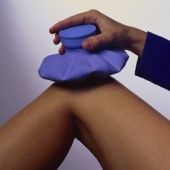Article
Osteoarthritis: Supplements for Joint Health
Author(s):
The nutritional supplements glucosamine and chondroitin have demonstrated some potential for reducing pain associated with osteoarthritis.
This article was originally published in Pharmacy Times

An estimated 27 million individuals in the United States suffer from osteoarthritis (OA)—a prevalent, slowly progressive, chronic form of arthritis characterized by the breakdown and eventual loss of the joint’s cartilage due to injury or normal wear and tear.1-3
Cartilage is an important part of the joint that cushions the ends of the bones and enables the joints to move easily.1-3 Once cartilage starts to break down, the bones rub against one another, causing pain, stiffness, and loss of movement/flexibility in the joint.1,2 Patients at risk for OA often become symptomatic between 40 and 60 years of age (Online Tables 1 and 2).4 OA in individuals younger than 40 years is typically the result of an injury or trauma.4
Treatment of OA generally involves physical therapy, drug therapy, and lifestyle modifications, such as weight loss, if warranted. Although many individuals affected by OA use traditional analgesics, some individuals elect to use various nonprescription supplements marketed for OA and joint health that contain the dietary supplements glucosamine and chondroitin sulfate. These supplements, which may be taken separately or together, have gained popularity in recent years. Studies report that glucosamine and chondroitin supplements appear to be relatively safe and well tolerated when used appropriately.5,6 Joint health supplements are formulated to support and protect healthy joint cartilage, serve as an alternative treatment for OA, and are marketed as single-entity or combination products.
Click here to go to the Pharmacy Times website and read the full-text version of this article.




